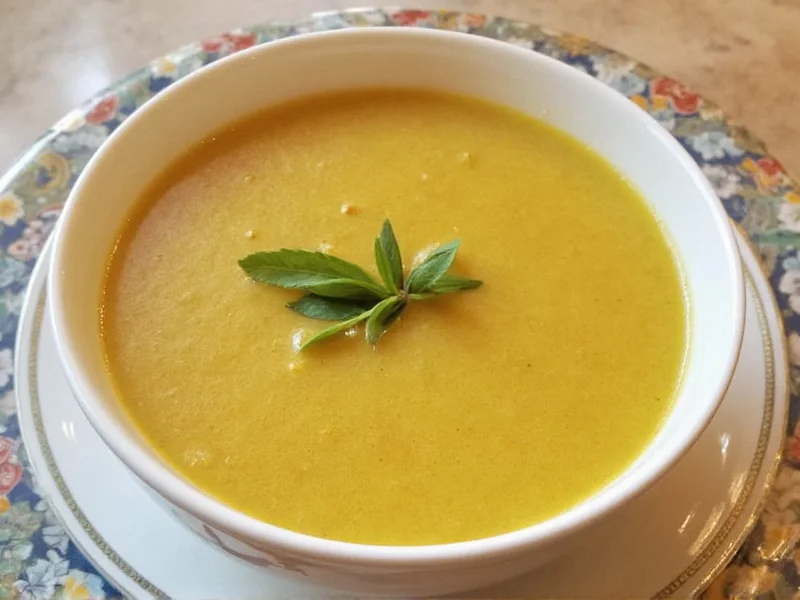What Is Knoephla Soup and Why It's Worth Making
Knoephla soup represents the culinary heritage of German-Russian immigrants who settled in the Dakotas during the late 19th century. This humble yet satisfying dish combines tender dumplings with savory broth and vegetables, creating a meal that's both economical and deeply comforting. Unlike standard dumpling soups, knoephla features uniquely textured pasta that absorbs flavors while maintaining its distinctive pillowy consistency.
As a food historian specializing in Midwestern cuisine, I've tested numerous variations to perfect this traditional recipe while preserving its authentic character. The secret lies in the knoephla dough preparation and the slow-simmered broth that develops complex flavors impossible to replicate with store-bought alternatives.
Essential Ingredients for Authentic Knoephla Soup
The magic of knoephla soup comes from its simple yet carefully balanced ingredients. Here's what you'll need for both the broth and knoephla dumplings:
| Component | Ingredients | Quantity | Special Notes |
|---|---|---|---|
| Knoephla Dumplings | All-purpose flour | 3 cups | Plus extra for dusting |
| Butter, cold | 1/2 cup | Cut into small cubes | |
| Eggs | 2 large | Room temperature | |
| Milk | 1/2 cup | Whole milk preferred | |
| Salt | 1 tsp | ||
| Soup Broth | Chicken, bone-in | 3 lbs | Thighs and breasts |
| Onions | 2 medium | Diced | |
| Carrots | 3 medium | Diced | |
| Celery | 3 stalks | Diced | |
| Potatoes | 3 medium | Yukon Gold preferred | |
| Chicken broth | 8 cups | Low-sodium | |
| Heavy cream | 1 cup | Added at the end |
Equipment You'll Need
- Large stockpot (8-10 quart capacity)
- Pastry cutter or food processor
- Rolling pin
- Sharp knife or pizza cutter
- Slotted spoon
- Measuring cups and spoons
Step-by-Step Knoephla Soup Preparation
Making the Knoephla Dumplings
- Combine 3 cups flour and 1 teaspoon salt in a large bowl
- Cut 1/2 cup cold butter into the flour using a pastry cutter until mixture resembles coarse crumbs
- In separate bowl, whisk 2 eggs and 1/2 cup milk
- Gradually add egg mixture to flour, stirring until dough begins to come together
- Knead gently on floured surface for 2-3 minutes until smooth
- Roll dough to 1/4-inch thickness and cut into 1/2-inch squares
- Place cut knoephla on floured baking sheet while preparing broth
Preparing the Soup Base
- In large stockpot, brown chicken pieces on all sides over medium heat (about 8 minutes)
- Remove chicken and set aside, then sauté onions, carrots, and celery for 5-7 minutes
- Return chicken to pot and add 8 cups chicken broth
- Bring to gentle boil, then reduce heat and simmer covered for 45 minutes
- Remove chicken, shred meat, and return to pot
- Add diced potatoes and simmer 20 more minutes until tender
- Bring broth to gentle simmer (not rolling boil) before adding knoephla
- Carefully add knoephla pieces and cook for 10-12 minutes until they float to surface
- Stir in 1 cup heavy cream and heat through (do not boil after adding cream)
- Season with additional salt and pepper to taste
Pro Tips for Perfect Knoephla Soup Every Time
Mastering authentic knoephla soup requires attention to specific details that separate good versions from exceptional ones:
- Dough consistency is critical - Knoephla dough should be slightly firmer than pasta dough but still pliable. If too dry, add milk by the teaspoon; if too sticky, add flour sparingly.
- Simmer, don't boil - When adding knoephla to the broth, maintain a gentle simmer. Boiling will cause the dumplings to disintegrate.
- Cook in batches - Don't overcrowd the pot when adding knoephla. Cook in two batches if necessary to prevent sticking.
- Rest before serving - Let the soup sit off heat for 15 minutes before serving. This allows flavors to meld and knoephla to absorb broth properly.
- Traditional variation - Some German-Russian families add a splash of vinegar to the broth for brightness, a technique worth trying for authentic flavor.
Popular Variations of Traditional Knoephla Soup
While the classic chicken version remains most popular, several regional and family variations exist:
- Vegetarian knoephla soup - Substitute vegetable broth and add mushrooms for umami depth
- Beef knoephla soup - Use short ribs or chuck roast for a heartier version
- Smoked meat variation - Add diced ham or smoked sausage for additional flavor dimension
- Gluten-free adaptation - Use gluten-free flour blend with xanthan gum for the dumplings
- Spicy version - Add a pinch of cayenne or diced jalapeños to the vegetable sauté
Serving Suggestions and Storage Tips
Knoephla soup shines as a complete meal but pairs beautifully with simple accompaniments:
- Serve hot with crusty bread or traditional German rye bread
- Top with fresh parsley or chives for color contrast
- Offer sour cream on the side for those who prefer extra richness
- Pair with a simple green salad for balanced meal
For storage, knoephla soup keeps well in the refrigerator for 3-4 days. The dumplings will continue absorbing broth, so you may need to add additional broth when reheating. Freeze portions in airtight containers for up to 3 months. When reheating frozen soup, thaw overnight in the refrigerator first, then gently warm on the stove without boiling to preserve dumpling texture.











 浙公网安备
33010002000092号
浙公网安备
33010002000092号 浙B2-20120091-4
浙B2-20120091-4